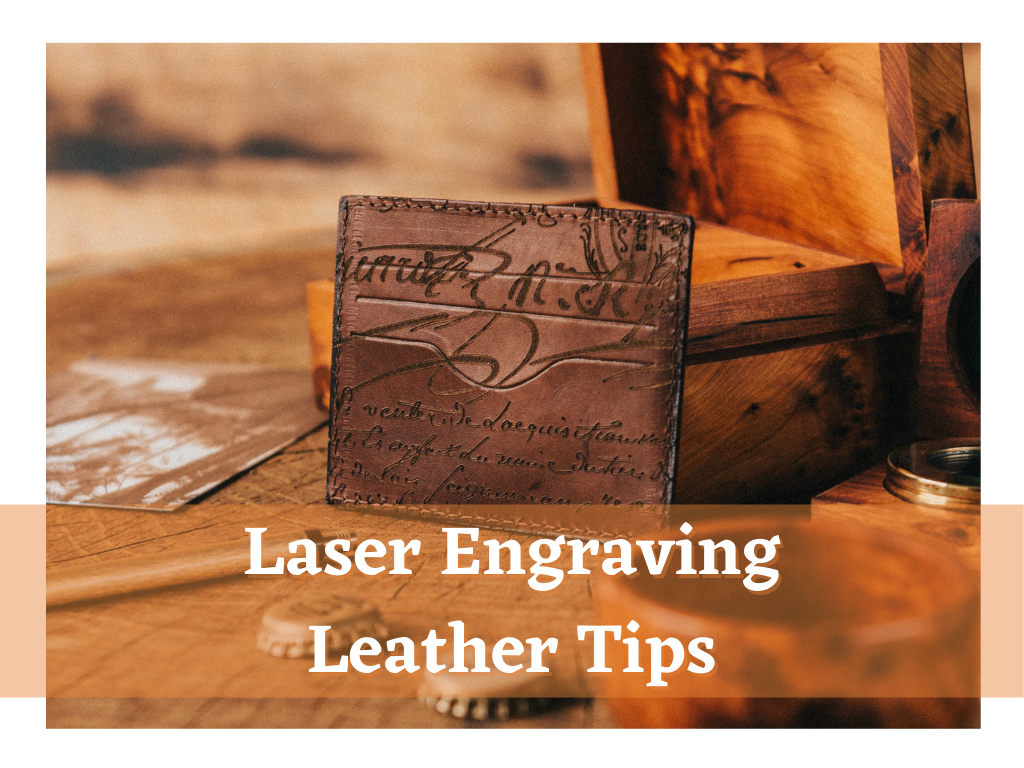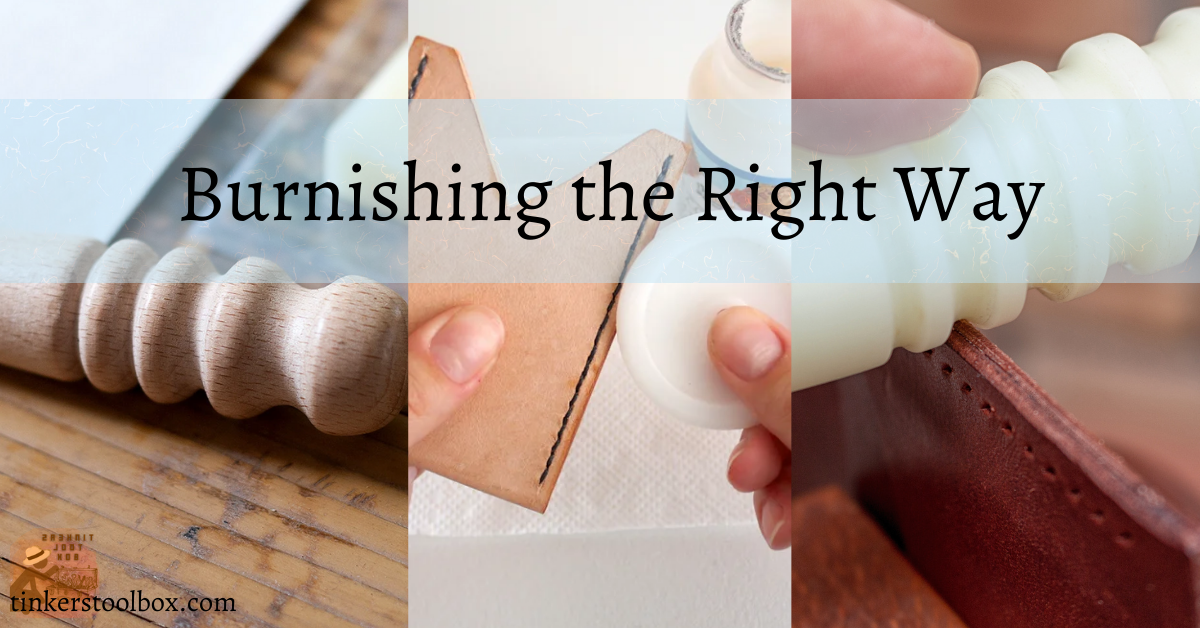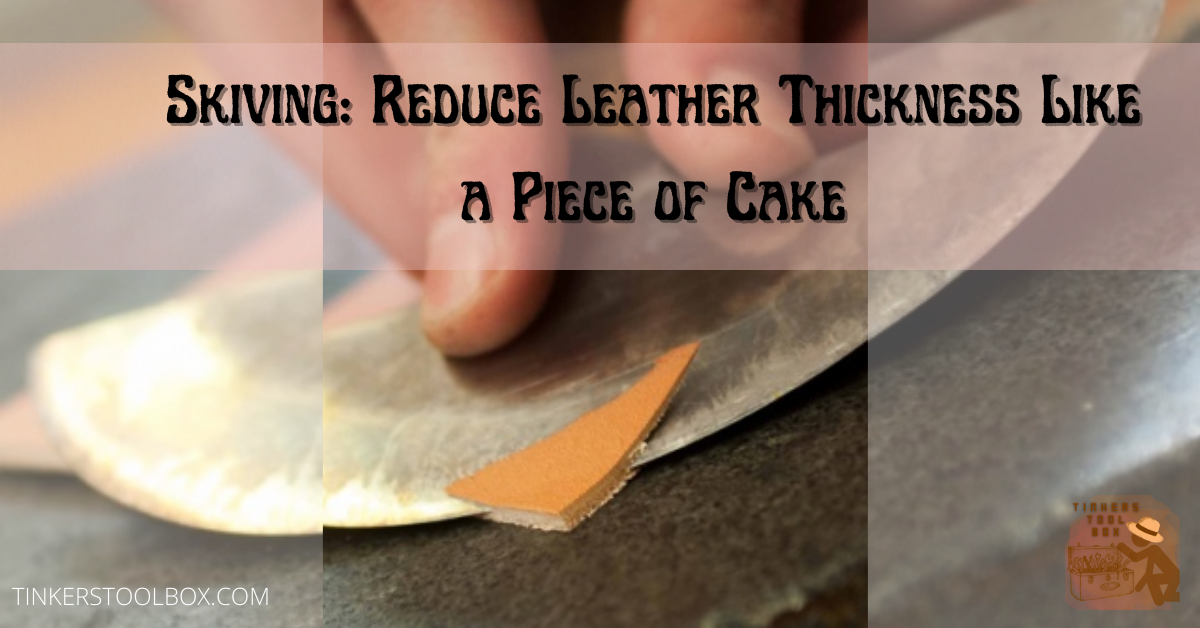So you have finally decided to do leatherworking, but there is a problem. You do not know where to start, what to buy, who to ask, or how to work on your projects. You might be looking for some tips and tricks that can help you save time, effort, and money in pursuing this project. You might be looking for some advice on how to set up your workplace or choose which tools to buy first and purchase next. Worry not because we have compiled them for you, all in one reading.
What are some of the tips and tricks you need to know in leatherworking? Some of the things you need to know include choosing your projects well, not buying expensive tools all at once, setting your workstation well, picking the essential tools properly, and learning the basics on dyeing and finishes as well.
This article will discuss a lot of tips and tricks on different aspects of leatherworking, from beginners to advanced level leatherworking enthusiasts. We will discuss tips and tricks on how to choose your supplies, including your leather, and tools for the basic leatherworking projects. We will also discuss more on how to choose your leatherworking projects well, as well as picking the perfect tools to complete your tools. We will also talk about setting up your workstation properly, and lastly, we will talk about dyes and finishes in leatherworking. Treat this as your crash course on leatherworking.
On Choosing Your Leather Craft Projects
See Leatherworking As An Endeavor, Not Entertainment
You are starting leatherworking as a hobby, meaning you want to be passionate about doing this as a form of leisure and entertainment on your end. However, you have to be serious about this as you might find yourself losing your interest if you just see leatherworking as a simple way to kill time.
Leatherworking is another form of art, so you can use it to express yourself. As time goes by, you will see leatherworking not only as a pastime but also a passion
Choose Projects That Interest You
Image Source: “Leather Pouches-5622” by derekdalton is licensed under CC BY-NC-SA 2.0
You want to be passionate about something you want to do for a long time, so you have to choose projects that will spark your interest into doing more. This helps you keep passionate about completing the project, which will give you a sense of satisfaction and accomplishment that can eventually make you feel good about yourself.
This will motivate you to finish what you have started, in other words. It also helps you narrow your focus on a few leatherworking skills instead of being overwhelmed by them all at once.
There are a lot of leatherworking projects you can choose from, but you have to align them to your interests. If you are interested in fashion, maybe you can try some leather jewelry projects that you can incorporate into your daily outfits.
If you are into interiors, maybe you can try doing some leather projects that you can use at home such as catchalls, coasters, switchplates, and others. If you are into DIY, you can try leather projects from scrap leather such as wallets, pouches, card holders, and coin purses.
Tap your interests and align them in choosing your projects in the future.
Choose Easier Projects First Then Progress
We can get pretty ambitious at times but we have to get a hold on ourselves, especially in leatherworking. It will not hurt to choose easier projects utilizing some simple skills in leatherworking, such as creating a small wallet, a simple cardholder, or a pair of cute teardrop earrings.
That way, you will be able to condition yourself into doing more complicated projects in the future once you feel confident with your acquired skills. Treat your projects as stepping stones which can help you improve your leatherworking skills in the long run.
One day, you’ll just see yourself taking on huge projects such as luggages and furniture which you cannot imagine yourself doing when you first started on leatherworking.
On Choosing Your Supplies And Workstation
Purchase Your Leather First And Foremost
You must have leather in leather working as this is your material for all of your projects. There are a lot of different options in choosing the leather you want to use for your projects, so do not be afraid to search for these options online, be it on Google or on your Facebook groups.
You have to look for these factors in choosing your leather: tannage, weight, temper, and finish. After that, find a suitable place for you to buy your leather. You can ask from the leather workers near you since they know nearby places where you can buy your leather without spending too much since leather is an expensive material to begin with.
We cannot afford to spend money on buying some expensive leather but we end up not using it.
Use Your Inner Scavenger And Hunt For Leather At Home
Image Source: “damaged eames lounge chair close-up” by stevendamron is licensed under CC BY 2.0
Of course, you are not required to buy new sheets of leather to start your leatherworking journey. If you find yourself strapped on cash for more leather, look no further than inside your house.
Search for old leather bags, jackets, coats, old sofas and couches, and other furniture for scrap leather. You might ask help from someone in skinning your sofas but the amount of leather you can get can save you loads of money.
Also, you might find unique patterns and leather pieces of high quality in your closet which you can turn into pieces that are uniquely for you.
Search for leather on flea markets too, or furniture stores if they have old leather samples you can have. The possibilities are endless only if you are very diligent in finding these. Having a keen eye helps a lot too.
You Must Set Up Your Workstation Well
Here’s some good news, you do not have to spend tons of money just to have your leatherworking workstation unless you are seeing leatherworking as a source of income.
You can work on your regular workbench, desk, portable table, or even your dining room table if you do not have much space. However, you have to consider several things if you intend to do leatherworking at home.
First, you must protect the workstation surface from cuts and bruises, especially if you are using your family tables. Cutting leather might leave scratches everywhere and it will really damage your table. Remember, it’s not only you who use this table but your family also does too.
It is important to have a sturdy working table in leatherworking because you are working with a sensitive material. Any wrong cuts from the knife to your leather pieces would ruin your project.
For this one, you should buy a cutting mat then lay it on your table before you do any cutting so that it would protect your table and ensure smooth cutting for your leather as well. Alternatively, you can use a folding plastic table but make sure it holds well in stamping, tooling, or punching holes.
When using your family table, do your stamping, hole punching, and tooling on the corner, right where the leg of your table is. That is the most stable place in your table to do these skills, where having a sturdy table is of utmost importance.
For tooling or stamping purposes, you must have a very smooth slab, either made of granite, marble, or concrete. If you really want to buy a table of your own, you can go to the old furniture store and use your keen eye to find a table that will suit your needs. Some of the tables being sold there have drawers and spaces where you can keep your tools and supplies within reach.
You should also have a drop cloth to protect your furniture. Cheap vinyl tablecloth works the best for this purpose.
When putting your granite slab down, make sure it does not mark the table. Consider putting it on top of some newspapers. Also, make sure that the bottom is smooth before setting it on your table. Again, if you are under a tight budget, you can just buy scrap marble or granite slabs for cheap in your hardware.
For punching holes, have a poly cutting board. Using your bare granite slab to punch your holes on the leather would surely damage your tools. Put the poly cutting board on top of the slab then put your leather on top of the cutting board.
Having A Storage Box And A Tool Box Is A Must
Image Source: “Arts Fest 2012 -013” by pennstatenews is licensed under CC BY-NC 2.0
You must have a box where you keep your tools and a separate box where you keep your supplies and materials for leatherworking. Poor storage causes leather to be damaged by accidental cutting or bruising. Get a divided box to store your small hardware such as snaps, rivets, and so on.
You can use a triangular FedEx shipping box to store your leather since you cannot fold some types of it, including veg-tan leather. Cut the boxes in half, form into triangles, then put six of them together to form a hexagon, then tape together. Use this as a stand for your rolled leather sheets. For this storage hack, you need at least three boxes.
Use smaller cups in pouring out your liquids, like glue, polishes, dyes, and paints. Use glass jars to put leftover paint, glues, or dyes for reuse in the future. You can use old baby food glass jars or small Mason jars. This helps you not only to save money but also become environment-friendly with your choices.
On Picking Your Essential Leather Craft Tools
The Essential Tools For Leatherworking
Image Source: “Leatherworking tools, Scuola del Cuoio , Santa Croce, Florence–shot from overhead mirror” by Gwendolyn Stansbury is licensed under CC BY-NC-ND 2.0
You must have a round knife for cutting and skiving. Round knives are known for its versatility when cutting and you can also use it for skiving purposes. However, you must dedicate some time in practicing how to use this so that you can use it properly and effectively. It also requires a lot of sharpening so keep that in mind.
Alternatively, you can use a rotary cutter. Using rotary cutters are easy, and it is also a cheap alternative to round knives. Sharpening is also easy thanks to the rotary sharpener, which is also easy to use. Here is a disclaimer, though: rotary cutters do not work well on cutting 90 degree corners or rounded corners. For those purposes, use an X-acto knife.
Meanwhile, you will also need edge bevelers for rounding out the edges. Generally used for thicker leathers, edge bevelers have a sharpened notch used for removing part of the edges. Diamond chisels are used for punching holes. These are used for punching stitching holes all the way through the leather.
You need a groover and creaser for digging a stitching trail, stitching awls for widening and creating stitching holes, an edge burnisher for slicking edges, stitching needles for stitching, of course, and a stitching horse for holding leather while you are stitching. This is perfect for beginners, as it helps with stabilizing your leather while you are stitching.
You need a hammer for hammering punches and setters. Pro tip: use a rubber one or a mallet. You will also need punches for punching rivet holes, and rivet setters for attaching rivets and other hardware onto your leather.
Do Not Buy Luxury Brands For Your Tools
Image Source: amazon.com
Especially for beginners, this is what you need to remember: not because it is expensive does it mean that it will do the job well. Do not be fooled by the expensive price tags because some of them might not deliver.
Ask the leather workers you know for recommendations on what brands to buy for your essential tools. They will be able to provide you with recommendations based from their experience, which is much better than just depending on user reviews on Amazon which can be faked or be made to deceive us.
Buy More Expensive Tools Once You Felt Comfortable Using Them
Image Source: “Tools of the trade” by mr.bmonroe is licensed under CC BY 2.0
It is better to treat your inexpensive tools as your practice tools because you are still getting the feel from them. Once you gained enough skills and expertise in using these tools, feel free to buy more expensive ones.
If you feel more comfortable using your trusted tools, no worries on that. At the end of the day, it is your level of comfort that will be the prime factor in using your tools for your projects.
On Dyeing And Finishing Your Leather
Using Dyes And Finishes Are Not Strictly Required
Image Source: “Leather Dyeing” by preservationgal is licensed under CC BY-NC-SA 2.0
There is no need to use dyes and finishes if you are already using finished leather. Finished leather is already treated well using the proper dyes and finishes, and is ready to use.
Nevertheless, no one is stopping you from dyeing it if you want to achieve more from it. Remember, it is not required to dye and finish your finished leather unless you desire more from it.
Different Types Of Leather Dyes
Leather dyes come in a lot of types, some are water based while some are alcohol based. Fun fact: some states regulate the types of dyes available to you, so it is the best decision for you to go to a Tandy Leather Factory store and see what is available to purchase in your place.
Bring the piece of leather that you will use for your project to the store and test the dyes and finishes there to see the effect on the leather once the dyes are applied. That way you don’t have to spend money on some dye and end up not using it because it is not what you expected it to look like on your leather.
Finishes Are Equally Important As Dyes In Leather
Image Source: “Leather dyeing vats” by sarah0s is licensed under CC BY-NC-ND 2.0
They are as important as dyes in leather, just like stains in wood. These finishes seal in the dye and give it some level of protection from the elements, especially if you are going to create projects meant for outdoors.
It also keeps the dye from rubbing off onto your hands while you work on your project. Even though this is important, you can choose to skip it especially if you are using finished leather already.
On Honing Your Leather Craft Skills
Treat Your Projects As Tests For Your Skills
Image Source: “What?… Oh, nothing, just leveling up my Leather Craft skill. #leather” by Martin Whitmore is licensed under CC BY-NC-ND 2.0
Do not be blinded by the marketing aspects of making leather projects for money. Behind every experienced leatherworker is a bunch of trials and errors throughout the course of his career.
Treat your projects as tools to help you hone your skills, from the basics down to the most complicated ones. Time and experience are the best teachers in leatherworking.
Never Be Afraid To Commit Mistakes
We learn from committing mistakes most of the time, especially if we are newbies in skills such as leatherworking. If you commit a mistake while cutting leather, do not be discouraged and stop in cutting; instead, get a fresh piece and try your best to be careful so as to not repeat the same mistakes.
Again, trials and errors make the best leather workers thanks to their experience. Learn from your mistakes and do not replicate them as much as possible.
Focus On Learning The Basics First
Image Source: “Leather Crafting Class” by Pictures by Ann is licensed under CC BY-NC-SA 2.0
There are a lot of skills you need to learn in leatherworking and these might intimidate or overwhelm you as a beginner. Focus on learning the basic skills first, such as cutting leather, punching holes, and stitching. These three are the most important skills you must have in leatherworking.
Once you feel confident in these three skills, take your time in learning other skills such as stamping, carving, and other complicated and intricate ones. Again, use projects as your practice sessions in honing such skills.
Ask For Help From The Experts And Experienced
Image Source: “Leather Crafting Class – WBCA” by Pictures by Ann is licensed under CC BY-NC-SA 2.0
Lastly, do not hesitate to ask someone if you need clarifications or suggestions in your projects. Leatherworking groups are popular online so you can post on forums like Reddit, other dedicated leatherworking forums, and also on Facebook groups.
You can also go to the leatherworkers nearby for some advice. Some of them might even give you more information than what you intended to ask, such as places where to buy supplies for cheaper prices, places where they get free supplies, and other hacks in leatherworking in general.
Conclusion
Leatherworking is a fun and productive hobby for everyone to pursue. However, with its broad range of projects, tools, and other skills that you must have, it might be intimidating to you. These tricks and tips are given by experts and experienced people in the craft so take these as seeds for you to learn. Explore more, ask more, and search more. Across all hobbies and pastimes, these things will give you a lot of knowledge that you will need to become a master in your craft. Do not hesitate and take that first step. Good luck!















